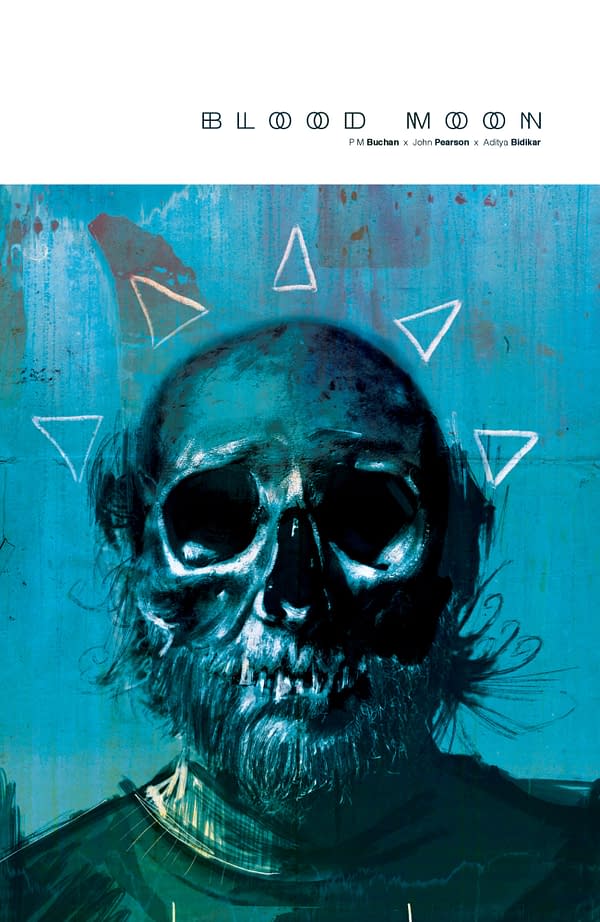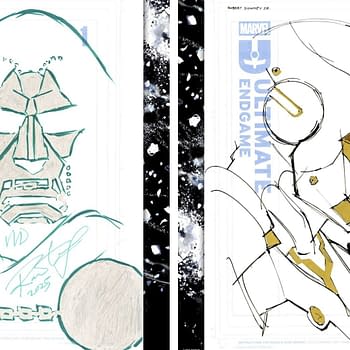Posted in: Comics, Indie Comics | Tagged: 44Flood, blood moon, department of truth, Heretics, james tynion iv, kickstarter, Martin Simmonds, PM BUchan
What Connects Blood Moon to The Department Of Truth?
PM Buchan writes for Bleeding Cool: Today, my good friend Martin Simmonds can celebrate the success of the launch of The Department Of Truth issue one, a new Image series about fake news, conspiracies, and the consequences of the convenient lies that we tell ourselves.
This is an incredible series that we're all going to be reading and talking about for years to come. I can't wait to read where it goes next. I'm proud of my friend, but I'd be lying if I said that I wasn't also a little envious. Because back in 2016, Martin and I announced our own series together, gambling everything on making it a success. Hereticswas a folk-horror series set in 1999 that we described to people as what it would look like if Rob Zombie had directed The Wicker Man.
I'm working on a new series now that's free to read online, Blood Moon – What Cost Revenge?, created with John Pearson, Aditya Bidikar, and former Bleeding Cool EIC Hannah-Means Shannon, but getting here wasn't an easy journey. At the time, Heretics was my greatest success and failure to date, wrapped up in one beautiful package. Apart from the issue zero prequel, Heretics never saw the light of day, and Martin and I didn't speak publicly about what happened to it. Until now…
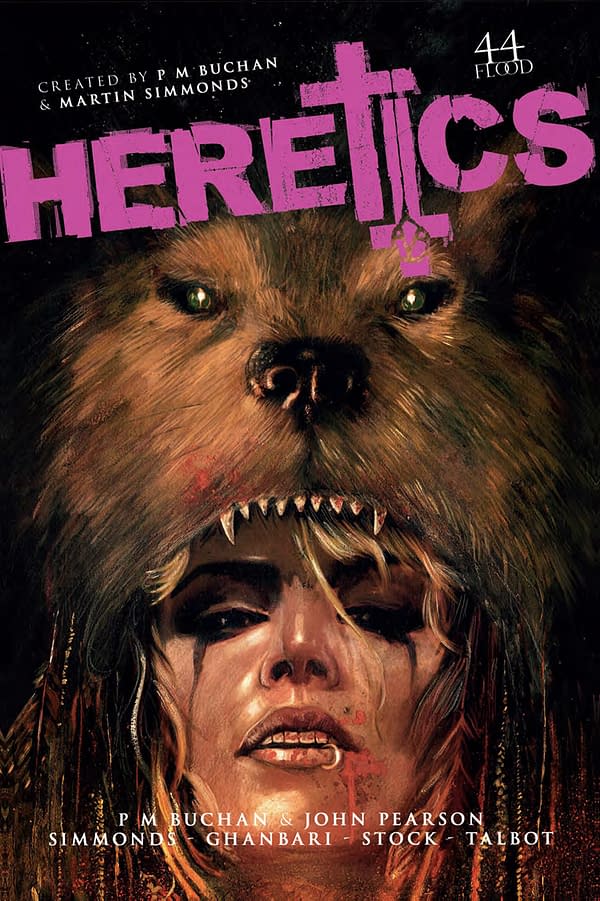
I first met artist Martin Simmonds, co-creator with James Tynion IV of The Department Of Truth (out today from Image Comics), through Lizzie and Conor Boyle in 2012, when they were teaming up writer and artist submissions for their Disconnected anthologies. We hit it off right away, also working on a two-page strip for the pages of Starburst magazine (with a letterer and graphic designer that Martin knew, Michael Stock). It was only a matter of time before Martin, and I found another project to work on together.
That same year a chance came up to interview the recently formed art collective, 44Flood, which included Monocyte co-creator Kasra Ghanbari and 30 Days Of Night co-creator Ben Templesmith. Their Kickstarter for Tome, an anthology of world-class artists that seemed destined to be astronomically successful. With contributors such as Bill Sienkiewicz, Ashley Wood, and George Pratt, it was tonally everything that I loved in the world. I interviewed the 44Flood founders and kept that conversation going in the months that followed.
I don't remember how I first broached the idea with Martin Simmonds, but after years of writing mostly horror-comedy strips for magazines, I felt ready to write the kind of dark, adult horror that I'd always been drawn to. I decided to write Heretics. Luckily Martin was on the same page, ready to take a chance.
We enlisted Mike Stock on lettering and graphic design again, and Martin got to work on the artwork for our pitch pages without delay. We were going to go all out and create the most ambitious story that we could achieve, investing all of our time, energy, and skills. The artwork would be a combination of pencils, ink, charcoal, oils, and everything in between. We would tell a story with more than just the art within the panels; we would tell a story in the panel boundaries themselves, creating our calling card for the world.
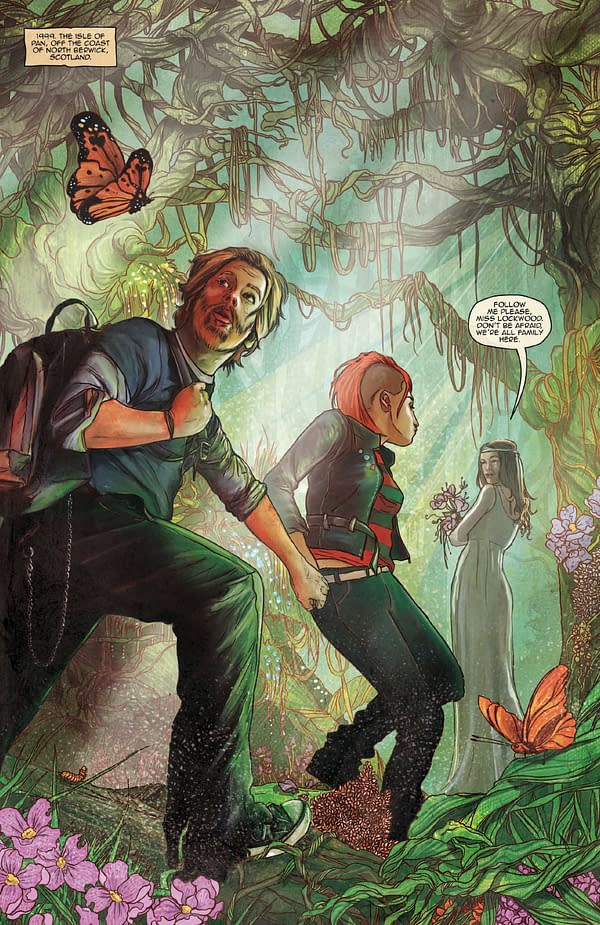
Set in 1999, Heretics follows the journey of investigative journalist Isobel Lockwood as she travels to a remote island off the coast of Scotland in an attempt to save her younger sister from the Children of the Sun, an abusive cult, founded by their father, that believes in free love and group sex. Inspired by classic folk-horror and research into the Manson Family, Hereticsis a tale of two sisters and a family poisoned by an idealistic ideology that couldn't survive in the real world. A tale where nobody is above temptation.
We pitched it in person to two of the big five publishers. They weren't interested. We knew that we were onto something, so we doubled down to improve the package, bringing on board Rob Talbot, who I had written alongside at Scream: The Horror Magazine and Starburst. He agreed to write a series of essays about the international history of folk-horror cinema, to be serialized across the six issues. To illustrate the essays, we recruited John Pearson, an ambitious and insanely talented artist I'd recently met and collaborated with for an exhibition at London's Orbital Comics. Martin re-painted the Heretics cover, and we packaged the whole thing together.
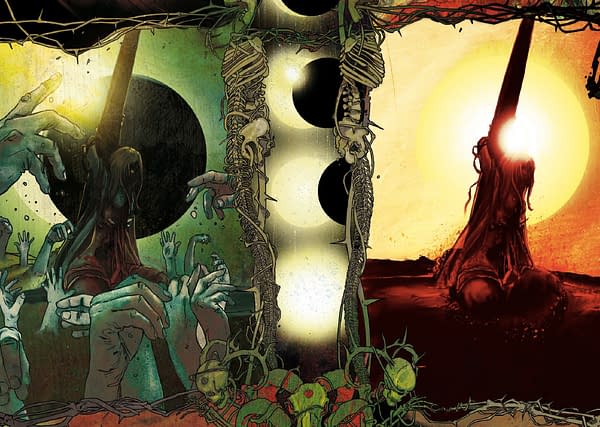
Finally, to make sure that we hadn't missed anything, I shared the package with Kasra Ghanbari from 44Flood for his advice. 44Flood weren't just an art collective; they had also signed a deal for IDW to publish and distribute many of their upcoming projects. Kasra offered to co-publish Heretics, alongside a publisher that would have been announced when the first issue was solicited to comic shops. So we signed contracts that met our ambitions – full editorial control, a guaranteed full-page advert in Previews, plus an oversized hardcover collection at the end. We signed, set out a schedule, and celebrated at the first unofficial Thought Bubble fringe party in 2014, organized by John Pearson and Owen Johnson in an empty shop-front. The party was a massive success, the talk of the convention and also the first night that I met Alex Paknadel, now part of the White Noise collective. We celebrated and drank until Martin had to be carried out of the party, on the road to our first creator-owned series, with a deal that everyone in the industry would have envied.

I wrote scripts for all six issues, averaging 26 sequential pages per comic, working with Martin and Kasra to polish them. Alongside the scripts, I worked with Kasra on a promotional plan. 44Flood had an incredible track record on Kickstarter. Still, we couldn't assume that the same audience would transfer over to Diamond distribution pre-orders and sales figures in specialist comic-book stores. So we worked out a schedule for announcements, how we would incentivize variant covers, and how to raise awareness of the series. The plan revolved around two key elements.

First, we'd create a preview issue zero, consisting mostly of pages already planned for issue one, so that we didn't create too much extra work for ourselves. We rounded out the package with a backup feature about folk-horror cinema by Rob Talbot and John Pearson, and because the story is so firmly rooted in the year 1999, we persuaded then Kerrang! editor George Garner to write a rundown of his top songs from that year, signposting our intention that comics and music would intersect in Heretics.
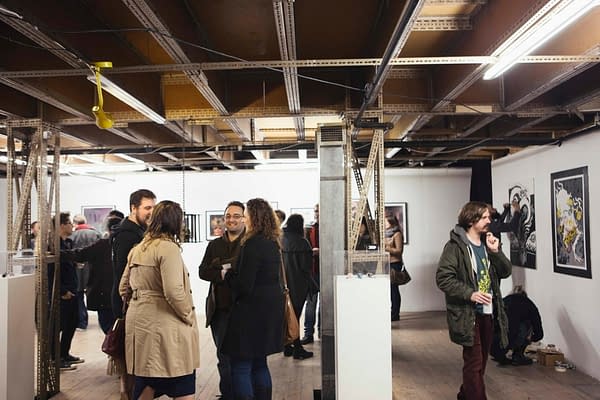
The second element was a launch exhibition – a physical event to act as the focus for our announcement, unifying the disparate folk-horror elements that combined to create Heretics. It would give us a deadline to work towards an opportunity to work with similar artists and show where we fitted in alongside our peers. It was a great photo opportunity to ensure that we had photography of people to go alongside sequential artwork when we were chasing publicity across different magazines and websites. John Pearson had a track record for having thrown hugely successful Thought Bubble festival fringe parties in 2014 and 2015. It gives us an incredible platform to try something new and host an exhibition launching Heretics as part of the official programme for the UK's best-loved comic convention. There were some delays with the artwork at Martin's end, so we wouldn't quite be able to run the official publisher's announcements, followed by Diamond solicitation that we had hoped for. However, we knew that we couldn't afford to wait another year and squander such a big opportunity.
We agreed to launch Heretics issue zero at Thought Bubble 2016, followed by an official publisher announcement and solicitation to comic-book stores through Previews magazine shortly after. It was a risk, but it was the best way to make the biggest splash we could, taking advantage of our connections and abilities without spending money that we didn't have. I called in literally every favor that I could or at least expended any goodwill that I'd earned from years of unpaid writing about other people's comics. The list of people who agreed to contribute original artwork to the exhibition was humbling.
Featured artists at the exhibition included: Martin Simmonds, Caspar Wijngaard, John Pearson, M D Penman, Stevie-Leigh Smith, Luke Axworthy, Sarah Gordon, Alisdair Wood, Anna Fitzpatrick, Conor Boyle, Will Kirkby, James Usill, and Andrew Tunney (aka 2hands), with live art on the opening night from Tasha Wild and Steve Myles from Pyre Climber, and a musical setlist from Rue Morgue Radio's Tomb Dragomir. To top it off, we'd always hoped to have Ben Templesmith create a variant cover for Heretics. Seeing this opportunity, he not only created the cover, but he also shipped the original artwork to England in time for the exhibition. Having an original cover created by one of my art heroes was a milestone in my life that will always be a high point.
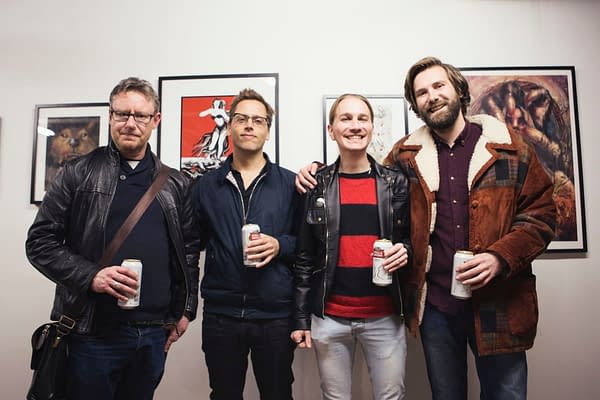
The exhibition was a resounding success. We got coverage across a wide range of news sites online. We had a great turnout on the night, with support from comic creators and friends such as Leah Moore, David Hine, John Lees, and Fraser Campbell coming down to support us. The professional photography that we commissioned came out great (though a note to anybody thinking about doing anything like this in the future. Remember to write a shoot list in advance for the photographer and make sure that they prioritize getting posed shots of you with your creative team, not looking like an idiot). The exhibition gave us an opportunity to generate spectacular images by famous artists like Caspar Wijngaard that could be used as variant covers to incentivize comic shops to place high order numbers. We'd gambled by revealing so much before the official publisher launch announcement, but it had paid off. Or so we thought.
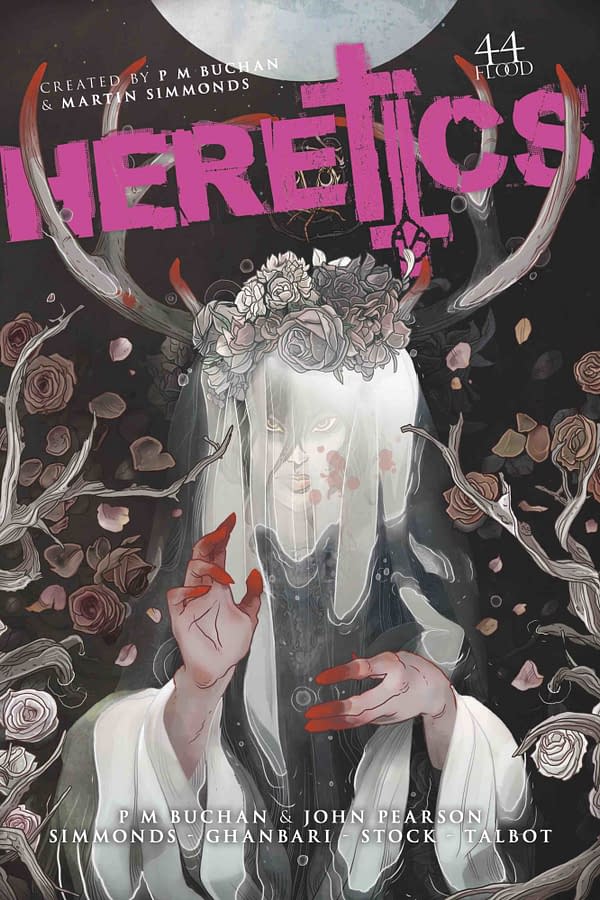
What happened next felt like nothing less than a professional tragedy. Life happened. Making a creator-owned comic like Heretics means that the creative team usually needs to have enough money saved to cover their bills whilst making the series. You won't see any money coming your way until after it has been solicited and often after the issues have hit the shelves of comic stores. It could be anything up to nine months after your series has been announced before you see a penny, and that's with the publisher paying print costs, distribution, and promotion up front, which they'll deduct from any money made. Add to that the time that it takes you to make the comic, to give to the publisher before they will agree to solicit it. It was less of an issue to me, with a career in PR alongside comics that gives me the leeway to take on additional work. But drawing a comic like Heretics is too involved to be anything less than a full-time job.
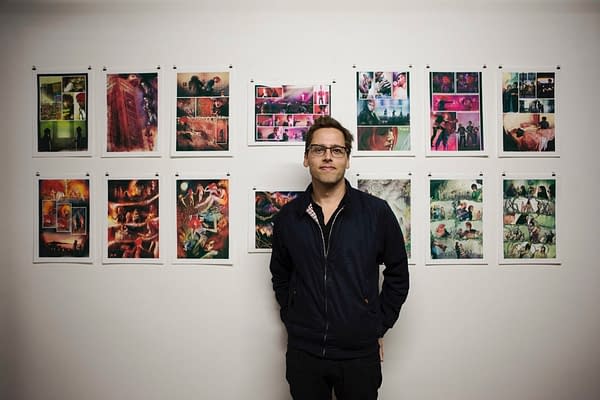
Martin had enough money saved before starting to cover his bills, knowing that the quality would mean more paying work coming his way as soon as he was finished. But life got in the way. Something unforeseeable not only drastically slowed Martin's ability to draw what we'd planned as the most detailed and intricate comic of our careers. It also ate most of his savings, to the point where he had no choice but to look for new ongoing paid projects, which led to his work on Punks Not Dead for IDW and Friendo for Vault. And that was that.
It sounds simple, but it didn't feel simple. The demise of Heretics was a half-year window during which Martin carried the weight of the world on his shoulders and had no space left mentally or physically to create the artwork that would be needed to make our publisher announcement. If Heretics had happened at a different point in our lives, I might have found a way to keep things afloat longer. But having recently relocated from one side of England to the other had wiped out any financial wriggle-room that I'd have for a couple of years, so instead, me and Martin were both in a hole. We watched a dream slip between our fingers until we could no longer avoid the fact that in order to support his family, Martin would have to move on to projects with guaranteed pay-cheques.
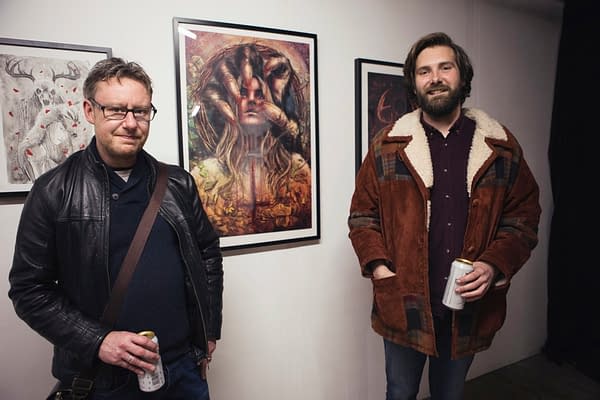
Time passed, and by necessity, we moved on. After Friendo and Punks Not Dead, Martin's next gig was on Dying Is Easy with Joe Hill, a writer with a massive, loyal audience whose Locke & Key series for IDW is one of the high points in the history of Western comics. And now the first issue of Martin's current Image series, The Department Of Truth, has already topped 100,000 orders. The greatest writers in the comic-book industry are taking note of Martin's talent now and no-doubt wondering how to entice him to collaborate. However much we'd love to make it happen, I think we'd be waiting a long time for a viable window for Martin to be able to return to Heretics.
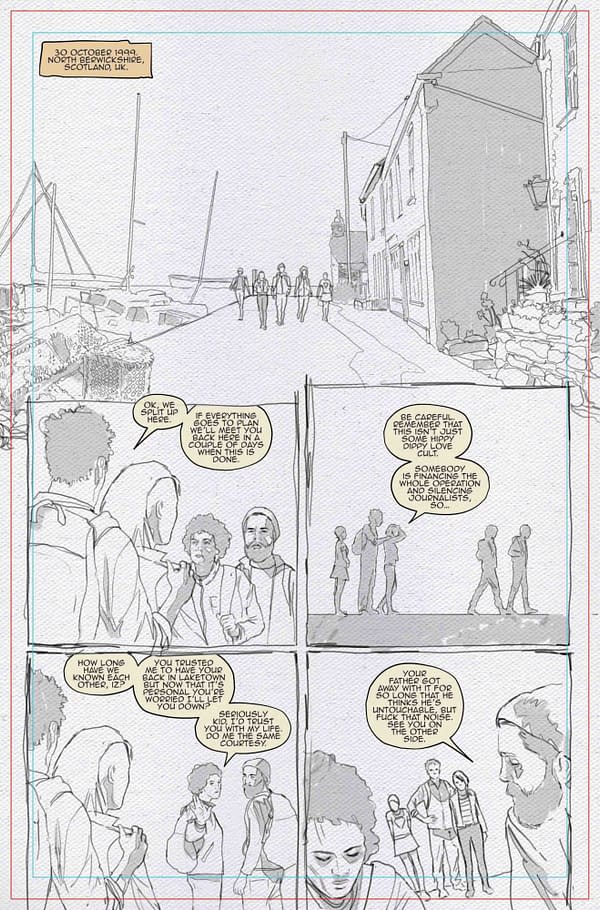
The period when we had put Heretics on pause was the most depressing experience of my professional life. However, with so much development work completed, so many pages of character and concept art, sequential artwork, lettering, layouts, synopsis, scripts, pitch documents, and more, I don't think that the world has seen the last of Heretics. Regardless of anything else, the script still probably contains the most depressing sequence that I'll ever write.
After the dust had settled, Martin and I sat down with artist John Pearson and developed a new art style that merges both of their work together and sees the book completed. At the time, we couldn't find a publisher willing to take a chance on it, but that was before Punks Not Dead, before DYING IS EASY, and before The Department Of Truth topped 100,000 pre-orders. With so much work already completed, in some ways, it feels like Hereticsis a story that we've already told. You just haven't had the opportunity to read it yet.
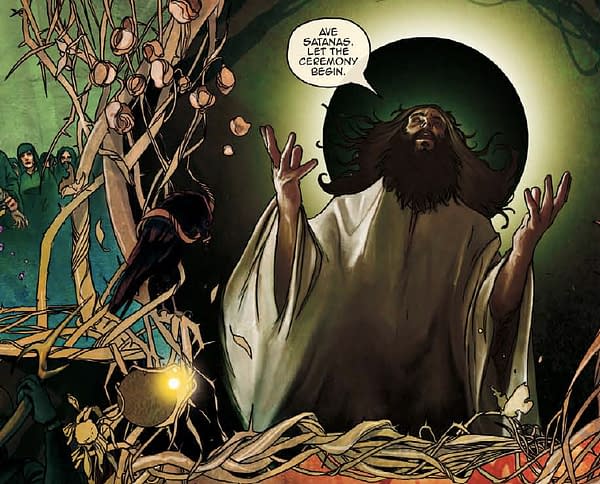
Despite the pain and disappointment that accompanied the experience, Hereticshas also led to some of the best things in my life. I've seen friendships shatter at far less. Still, because of the things we've been through together and our commitment to *not* letting shitty circumstances drive a wedge between us, I've got a lifelong friend in Martin, one of the most talented comic-book artists in the world. And after artist John Pearson's herculean work to make the exhibition a success and illustrate the backup features, we sat down together and started talking about a new idea. Thinking about the classic revenge-thriller trope of somebody who allowed themselves to be consumed by vengeance and whether that was something that should be glorified or if, in reality, it would be the ultimate act of selfishness.
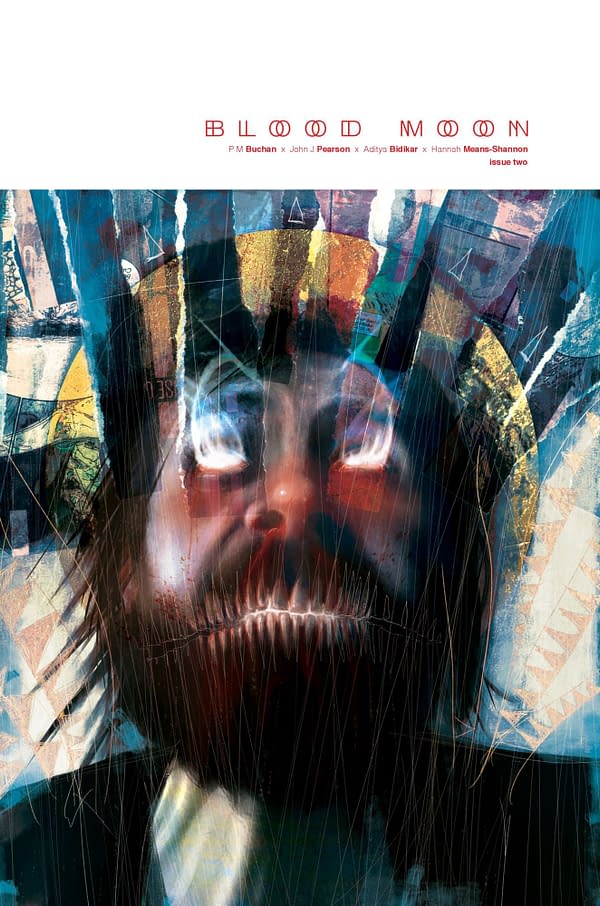
Those conversations led to our current work together on the webcomic Blood Moon, free to read online and with the newest pages sent first to John's Patreon subscribers. You might have seen our strip in Heavy Metal's Megadeth: Death By Design Anthology, which we worked on with editor Hannah Means-Shannon and letterer extraordinaire Aditya Bidikar. We kept the same team together for Blood Moon– What Cost, Revenge?, a contemporary English folk-horror set in isolated Cornwall on the eve of the UK's divisive Brexit referendum.


The first two of six chapters are already complete, packed with bloodshed, witchcraft, and remorse. You can see John Pearson's other recent work with Ram V in James Tynion IV and Steve Foxe's Razorblades: The Horror Magazine or in the new Image graphic novel Blue In Green with Ram V, Anand RK, and Aditya Bidikar. Why not check them out, then come back and bookmark http://bloodmooncomic.com to read the comic that has already featured on the cover of Rue Morgue and find out how we bounced back from Heretics with the story of a man who loses everything and vows to have vengeance at any cost?
